
May '13 - Feb '16
Puebla is a city to the southwest of Mexico City, about a two hour bus ride. A very old city, it was founded by Catholic orders to counter nearby Cholula, a historic center of Aztec and indigenous faith. Puebla remained a bastion of tradition and conservativism for nearly its entire history, a polar counterpart to the waves of liberalism and anti-religiousness which has occationally swept the nearby capital. As such, the historic center remains very much intact, and a highly unlikely place to find new modern architecture.
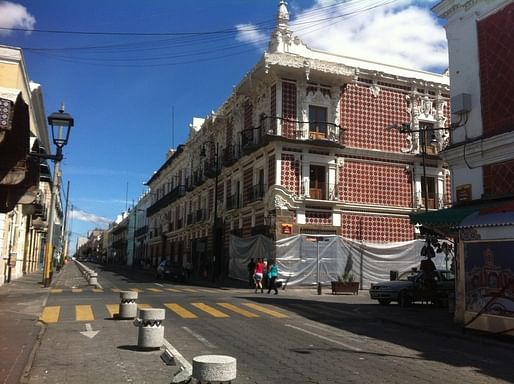
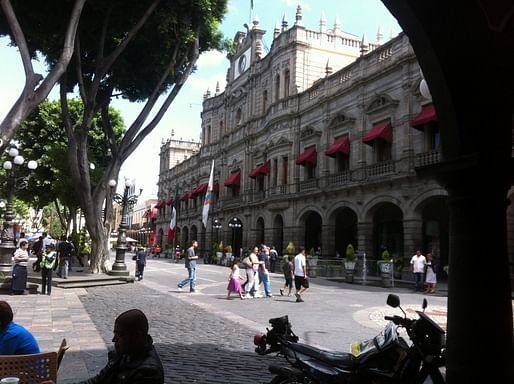
Puebla looks like I imaged Mexico City would be before I arrived. The historic center looks like a historic center, a rigorously gridded city of uniformly old buildings, all painted brilliant pastel colors. Much more picturesque than most places in Mexico City.
Our main goal was the Museo Amparo, which my guidebook claimed to be the highlight of Puebla. The private museum has a phenomenal and extensive collection of pre-hispanic artefacts, and occupies two historic mansions near the Zocalo, and has recently been renovated and expanded by TEN arquitectos. Unfornately, after we paid for our tickets (35 pesos (about $2.50, but still), they told us that the pre-hispanic stuff was not on display, and most of the musesum was closed to complete the renovations.
TEN Arquitectos is not, as I once thought, an office with ten (10) architects. TEN is short for Taller de Enrique Norten, another estrellaquitecto who is part of the generation of younger modern architects who get a lot of international attention.
We were able to see some contmporary photography and a few salons which existed as they were in the age of Imperial Mexico, but what made the 35 pesos worth it was the roof lounge. TEN built a massive wooden deck and glass box on top of the old houses, and that's where the cafe is. There are tables and chairs outside, and I would say that at night it must be an amazing bar-lounge. You have some great views of the surrounding city, right at the level of the colorful roofscape. I grabbed a coffee there, and we continued on our way.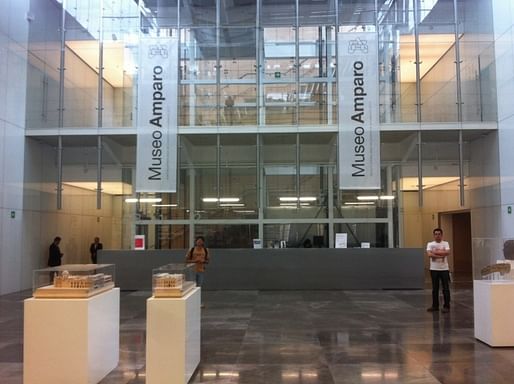


I was able to talk my friend Sergio into climbing up to the forts on top of the hill overlooking the city, a little over a mile walk from the Zocalo. Really nice views of the city from there, and the old, low forts with thick walls were picturesque in their own way. The fort is known as Fuerte Loreto.
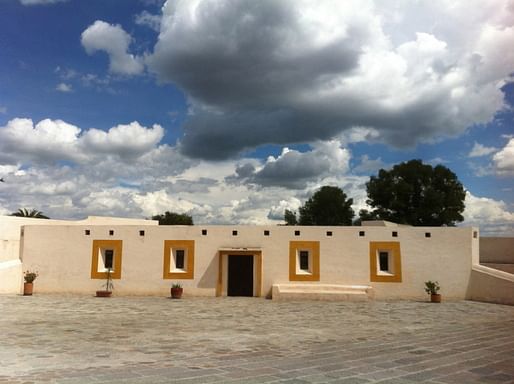
We had actually stumbled our way into the arcane niche of miraculous architecture. In the Catholic tradition, there is a story about the Loreto, the house of the virgin Mary. The house was not once, but twice picked up and carried by angels like a divine double-wide going down the interstate. Once to avoid flooding, and once to avoid persecution and destruction. According to the tradition, the second time it was carried by angels was as late as 1200 AD, which would make the house, a peasant's house with a tile roof, also miraculously durable. Who was that architect, anyway?

Anyway, the house was finally set down in Italy and became the object of veneration of a certain group of nuns. From that time on, replicas of the house with identical architectural features and dimensions would be constructed and then made into more elaborate churches over time. This was the case of the chapel on top of the hill overlooking Puebla, although the leaders of the city seized the chapel and made it the center of a small fort from which to defend the city and act as a base of military operations.
From the fort, it is short walk down to the new memorial to the battle of Puebla (the origin of Cinco de Mayo celebrations). This is a new monument of wood flowing over the landscape, also by TEN arquitectos, with nice views of Puebla and inexplicably, an upscale gift shop and a Celito cafe (a Mexican Starbucks equivilant). Benches lift out of the sloping deck almost like surfboards from a wooden wave. It's interesting, but its more of a memorial park in name than in function or appearance.
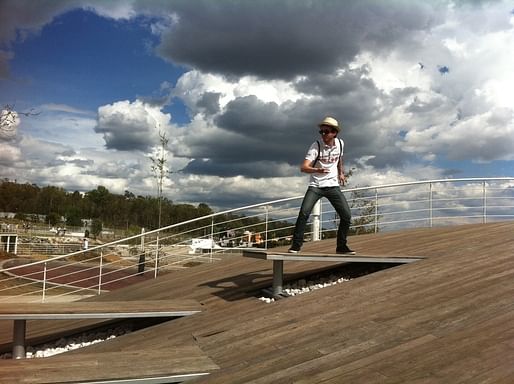


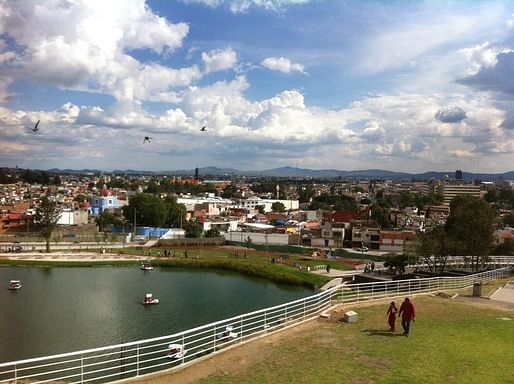
It's new, but the wood decking is getting punched through and ripped up in places. It looks like it's part of a masterplan for the area just below the fort, since there was also an apparently new addition of a pleasure lake. Since lakes tend to not sit well on hillsides, the side of the hill was excavated for the lake, so despite the nice views, it still feels like an open quarry. Maybe in a decade with more development and a better connection to the historic center, it will all hang together better.
Urban and architectural explorations from Mexico City to Stuttgart Germany through the eyes of a iterant architectural designer
1 Comment
nice, you should check out the city Guanajuato, and San Miguel De Allende ,very historic and walkable cities
Block this user
Are you sure you want to block this user and hide all related comments throughout the site?
Archinect
This is your first comment on Archinect. Your comment will be visible once approved.